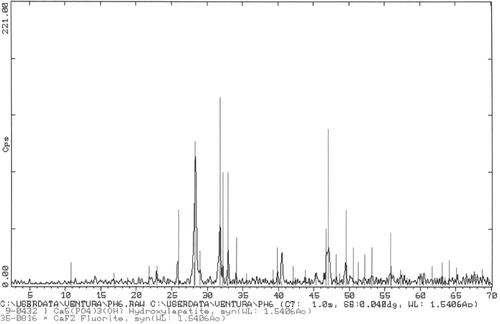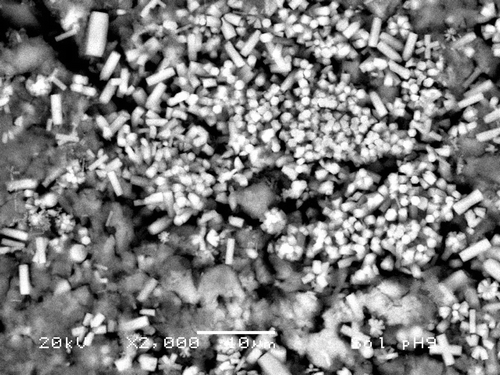Figures & data
Figure 1. SEM micrograph of sample prepared as described in the text at pH = 6. Hap needles about 1 µm long and 0.1 µm thick form bundles from a common origin. These bundles join one another and fill the space (marker = 1 µm).
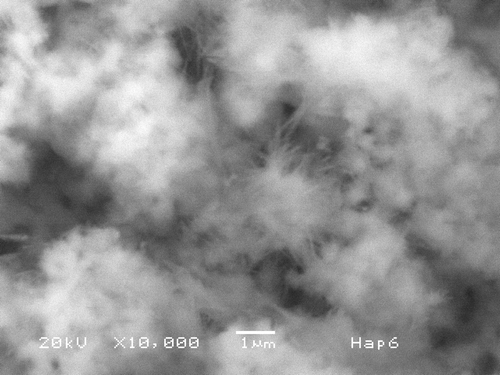
Figure 2. XRD from sample in shows the presence of Hap with very high crystallinity. Peaks for other calcium phosphates are not present.
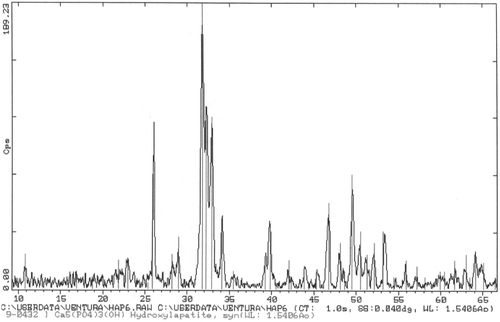
Figure 3. SEM micrograph of sample prepared at pH = 9. Hap needles 12 µm long are observed, some as thick as 1 µm are present. Some form bundles from a common origin.
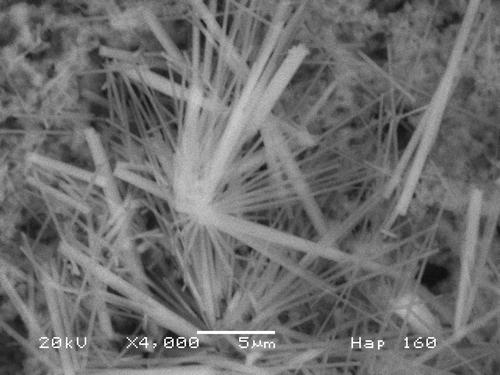
Figure 4. XRD of sample of shows the presence of Hap with very high crystallinity. No peaks for other calcium phosphates are present.

Figure 5. Backscattered electrons micrograph from sample prepared at pH = 6 shows elongated crystallites about 5 µm long and 1 µm thick embedded in a SiO2 matrix. Hap crystallites appear isolated, not in bundles.
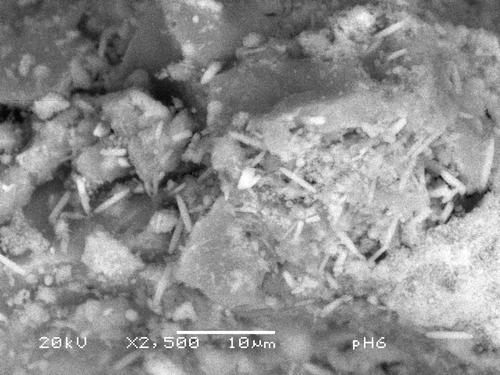
Figure 6. XRD from sample in . It shows that the needles are crystalline Hap, although a couple of extra peaks are present. These could be due to CaF2 or KCl2.
